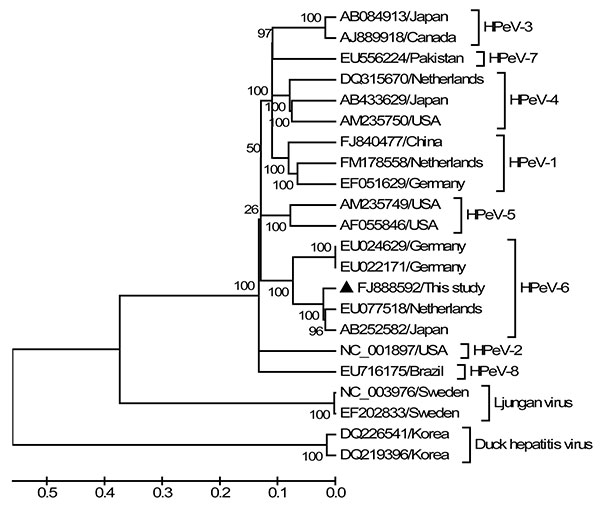Volume 16, Number 7—July 2010
Dispatch
Human Parechovirus Infections in Monkeys with Diarrhea, China
Figure

Figure. Phylogenetic analysis of the complete genomes. Phylogenetic tree was constructed by the neighbor-joining method with 1,000 bootstrap replicates using MEGA4.0 software (www.megasoftware.net) with an alignment of the nearly full genome isolated in this study and 17 human parechovirus (HPeV) and related genomes. Bootstrap values are indicated at each branching point. GenBank accession numbers and countries of origins are indicated. The isolate of genotype 6 is marked with a triangle. Scale bar indicates estimated phylogenetic divergence.
Page created: March 02, 2011
Page updated: March 02, 2011
Page reviewed: March 02, 2011
The conclusions, findings, and opinions expressed by authors contributing to this journal do not necessarily reflect the official position of the U.S. Department of Health and Human Services, the Public Health Service, the Centers for Disease Control and Prevention, or the authors' affiliated institutions. Use of trade names is for identification only and does not imply endorsement by any of the groups named above.